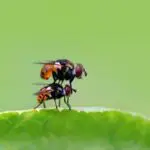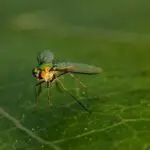Can Flies Pass Disease to Humans?
While it may be difficult to believe, flies can be carriers of several diseases. For instance, peptic ulcers are one common symptom of the Helicobacter pylori bacteria, which is also a risk factor for stomach cancer and non-Hodkin’s lymphoma in humans. Flies have been found to carry the bacteria in up to 15 percent of all samples, but it is not known how they spread the infection. Many other diseases may be carried by flies, which breed on decaying organic matter and feed on feces.
Viruses transmitted by flies are often highly contagious, and if not treated, can lead to severe illness or death. The recent outbreak of the COVID-19 virus has highlighted the potential for flies to carry human diseases. Furthermore, flies can transfer infectious agents from one area to another through contact with contaminated fomites.
Flies are classified into two general groups, based on appearance and feeding habits. There are two types of flies, true flies and filth flies. True flies are generally dark in color, with three dark stripes on their thorax and a checkerboard pattern on their abdomen. Flies in general feed on organic matter, including humans and animals. While they are valuable scavengers, filth flies are highly dangerous.
The most common species of fly responsible for disease transmission is the common housefly. These insects can transmit 65 different types of bacterial and viral diseases. In fact, they are considered to be a greater threat to the welfare of humans than most other insects. The common housefly carries more than one million bacteria and can transfer these bacteria to surfaces. This means that they can transmit diseases such as E. coli and cholera to humans.








